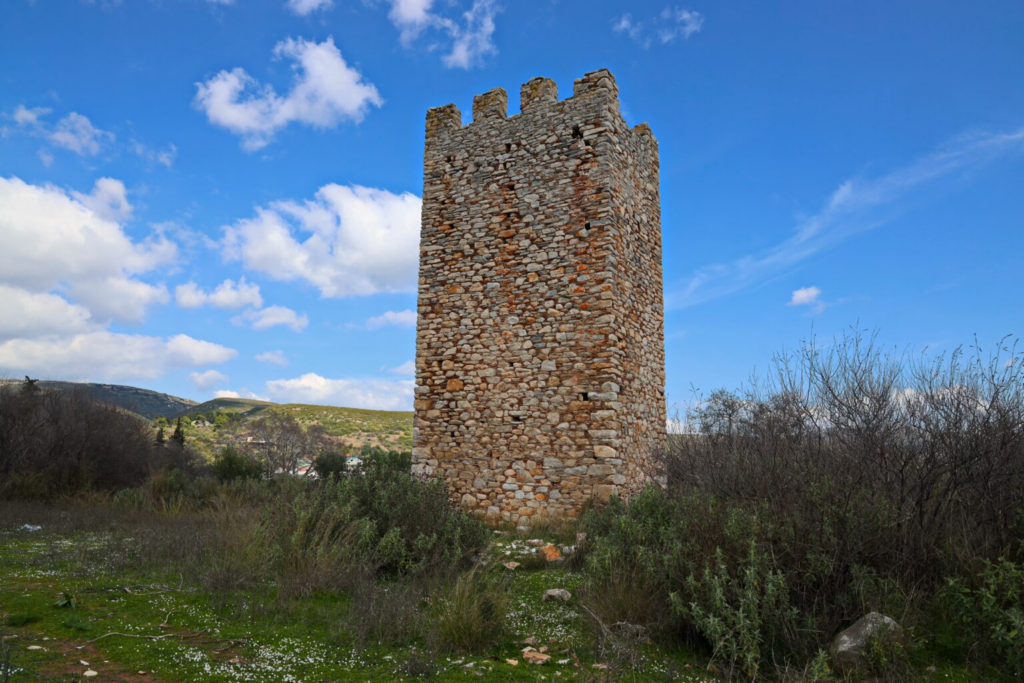The Marathon Dam is one of the most well-known landmarks in eastern Attica. Even if you’re just driving past it, it’s hard to resist stopping to admire the view of the lake and the surrounding landscape. Constructed between 1926 and 1929, the dam played a pivotal role in supplying water to the capital, as the Marathon Lake was Athens’ main water source until 1959 when it was connected to Lake Yliki. The dam stands at 54 meters tall, 285 meters long, and has a base width of 28 meters.

A hike through the Oinoi Gorge is recommended to see this iconic engineering feat from a unique perspective. At the base of the dam, there is a lush habitat to explore. The starting point for this hike is a lesser-known yet significant historical building—the Oinoi Tower, a well-preserved medieval monument built around 1250 under the command of Guy I de la Roche, the Duke of Athens. It was likely used to oversee the Marathon Plain. Although the tower is closed to the public, it’s an impressive structure to admire from the outside.

Two paths lead from the tower into the gorge. The left path is about 4 kilometers long and slightly uphill, while the right semicircular path is shorter (around 2.5 kilometers), but it’s more challenging and less visible, making it unsuitable for inexperienced hikers.

Along the hike, two other points of interest stand out. First, the remnants of the Temple of Pythian Apollo, are now reduced to a few stone and marble fragments. Second, the small Church of the Holy Apostles, surrounded by trees and offering a peaceful resting spot.

The primary part of the hiking experience begins after about 10 minutes, as you enter the gorge of the Charadros River. The landscape transforms, with plane trees, flowing water (less so in summer), and the sounds of nature creating a refreshing atmosphere even on hot days. As you approach the dam, its massive size gradually becomes visible.

At the base of the dam, you’ll find a small chapel modeled after the “Treasury of the Athenians” at Delphi, built to thank the gods for the victory at the Battle of Marathon. This monument underscores the importance of the dam’s construction at the time, highlighting the severe water scarcity issue it helped resolve.

Additional Highlights:
- One of the most famous scenes from the Greek film “Lieutenant Natasha” was filmed at the steps of the Marathon Dam.
- The full hiking route, including the return, is just under 8 kilometers and takes about 3-4 hours.
- The route is easy to follow, making it ideal for beginner hikers.

For those looking for a complete day trip, you can also explore nearby dining options or head to Marathon Beach, about 20 minutes away by car, for a swim.

Ask me anything
Explore related questions





